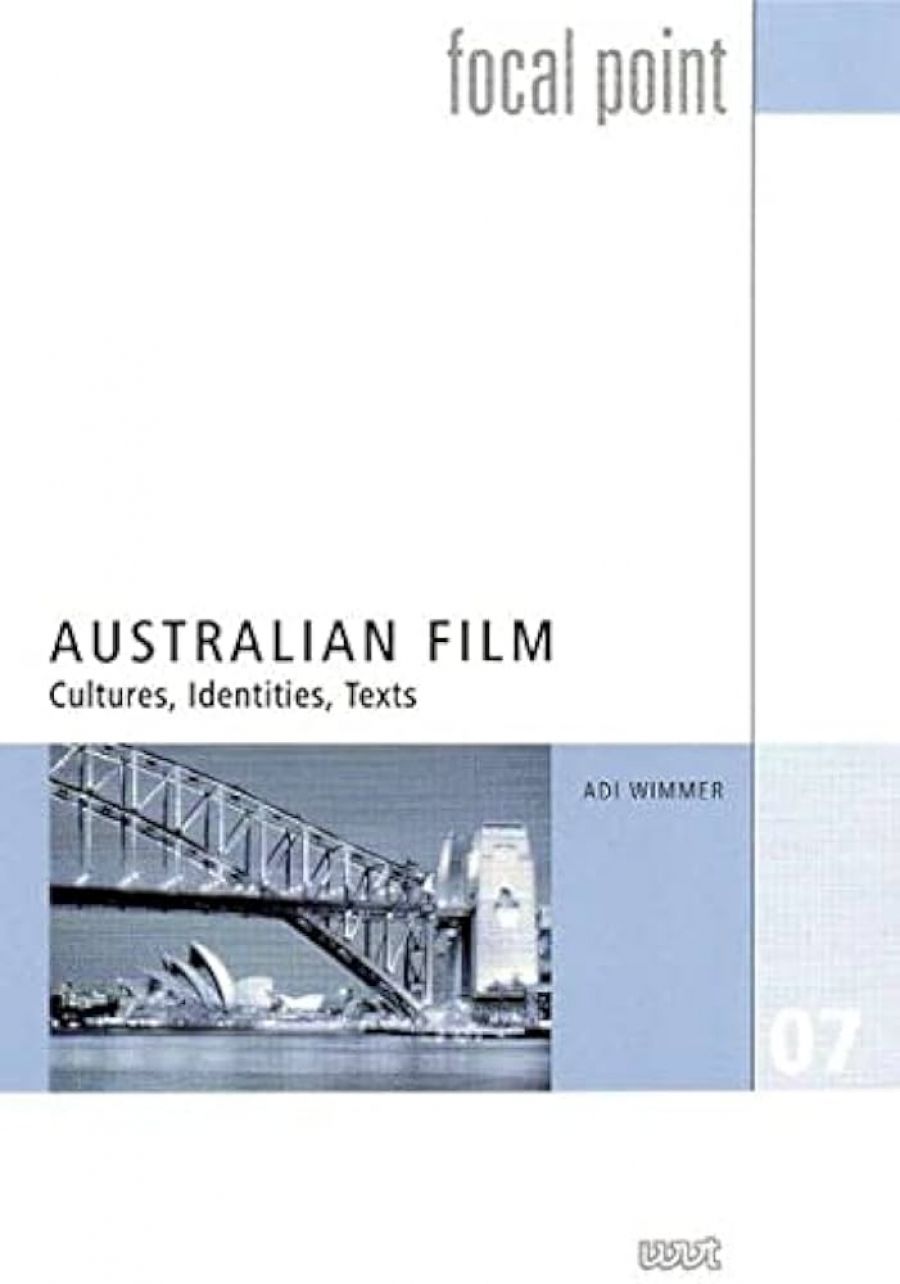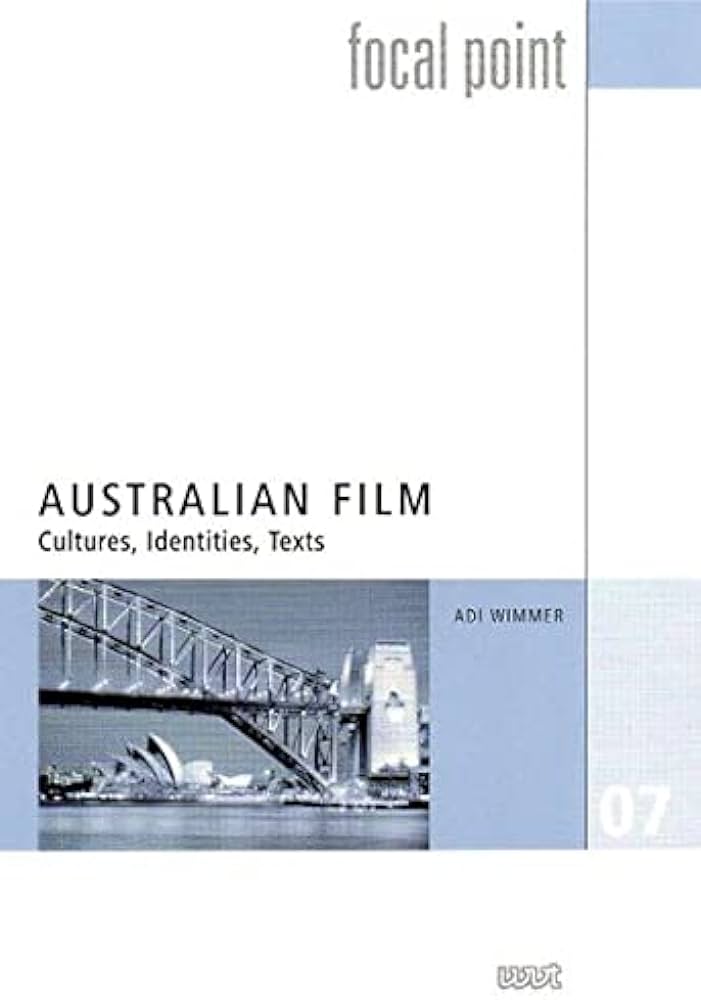
- Free Article: No
- Contents Category: Film
- Custom Article Title: Decaying icons
- Review Article: Yes
- Article Title: Decaying icons
- Online Only: No
- Custom Highlight Text:
It is no easy task for an outsider to anatomise a national cinema, and the Austrian academic Adi Wimmer suggests in this series of essays that Australian cinema has always been more national than most. In other words, our filmmakers have been unusually dedicated to the project of defining a collective identity through a set of instantly recognisable myths: the ultimate Australian film would be one that showed a group of sun-bronzed, laconic, Anglo-Saxon blokes battling droughts and big business in a wide brown land seen equally as a symbol of brooding masculinity and as a hostile mother.
- Book 1 Title: Australian Film
- Book 1 Subtitle: Cultures, identities, texts
- Book 1 Biblio: Wissenschaftlicher Verlag Trier , €25.30 pb, 209 pp
- Book 1 Cover Small (400 x 600):

- Book 1 Cover (800 x 1200):

Instead, he has to start from the beginning: the second and longest chapter in this book is a ‘contextual history of Australian film’, which takes us on a guided tour past a range of familiar landmarks, from the bushranger melodramas of the silent era to the disreputable ocker comedies and officially sanctioned period pieces of the 1970s production revival, and thence to the ‘quirky’ films of the 1990s, which celebrate diversity while retaining traces of the old larrikin spirit. The trail peters out in the new millennium, and the remainder of the book carries us back over much of the same ground, as individual chapters focus in greater detail on such topics as the bush–city conflict, the cultural cringe and the rise of multiculturalism.
Wimmer describes his critical approach as ‘narratological’, which is a fancy way of saying that his discussions of individual films rely more on plot summary than on anything else. Even in his thoughtful accounts of Picnic at Hanging Rock (1977), The Chant of Jimmy Blacksmith (1980) or Floating Life (1996), he is mainly interested in identifying variations on the same large-scale oppositions: culture and nature, the city and the bush, darkness and light. At the outset, he defends the absence of fine-grain stylistic analysis by proclaiming that he is chiefly interested in the ‘genesis and reception’ of films and how these are grounded in cultural discourse, rather than in ‘visual experiences devoid of a social context’.
Clearly, however, every film comes into being within a specific social context, though not every film reaches a wide enough public to influence the self-image of a nation. Pressing onward down the main highway, Wimmer rarely swerves into the side roads and cul-de-sacs where the bulk of interesting Australian cinema has always been found: there is no mention of Mad Dog Morgan (1976) or BMX Bandits (1983), let alone any of the avant-garde activity documented for twenty years in the pages of ‘Cantrills Filmnotes’. The work of Tracey Moffatt is dismissed in an inept paragraph; even Mad Max (1979) and its sequels receive cursory treatment.
In other words, this is not a book for film buffs seeking viewing tips. But if Wimmer’s aim is simply to study cultural products and their effects on audiences, how much sense does it make to consider cinema in isolation from other media? The question can hardly be avoided, given that Australian films are presently a minority taste, while Australian television reaches millions of local viewers daily; though Wimmer briefly touches upon the 1980s boom in soapies and mini-series, he says nothing to indicate that he has actually watched Neighbours or All the Rivers Run. Likewise, his excursions into theatre and literature tend to blur the book’s focus rather than widening its scope.
Overall, Australian Film is a moderately useful introduction to its subject, but not a very satisfactory one. Wimmer has barely attempted to update essays which, in some cases, were written a decade ago or more, and discusses no film more recent than Japanese Story (2003). A competent editor would have insisted on a higher standard of proofreading, as well as keeping a closer eye on the author’s bumbling efforts to maintain a façade of political correctness: he can’t resist cracking dumb jokes at the expense of rape victims in his discussion of Blackrock (1997), while Head On (1998) leads him into some odd speculations, including the claim that gay men have a special talent for dancing which helps them to ward off Alzheimer’s Disease. In a further display of his progressive credentials, he waxes lyrical over Priscilla in a passage that contrasts with Brophy’s more cynical reading, though he struggles to reconcile the film’s pro-queer stance with its flaunted sexism and racism.
Given his preoccupations, it is especially regrettable that Wimmer makes no mention of Welcome to Woop Woop (1997), the film which the director Stephan Elliott made immediately after Priscilla, and perhaps Australian cinema’s single most thoroughgoing satire on its own nationalist ideals. This has it all: decaying icons, slaughtered kangaroos, kitsch Aboriginality, the country’s dead heart as a utopia cum prison, and an obsession with ‘respectable’ Anglo-American culture (specifically, the musicals of Rodgers and Hammer-stein) as a last-ditch defence against social collapse. Appropriately, all this is seen through the eyes of an overseas visitor, played by the American actor Johnathon Schaech, best known for his role in The Doom Generation (1996); no figure of authority, he is cast by Elliott as a fly-by-night conman who is trapped in the desert and lost like the rest of us.


Comments powered by CComment